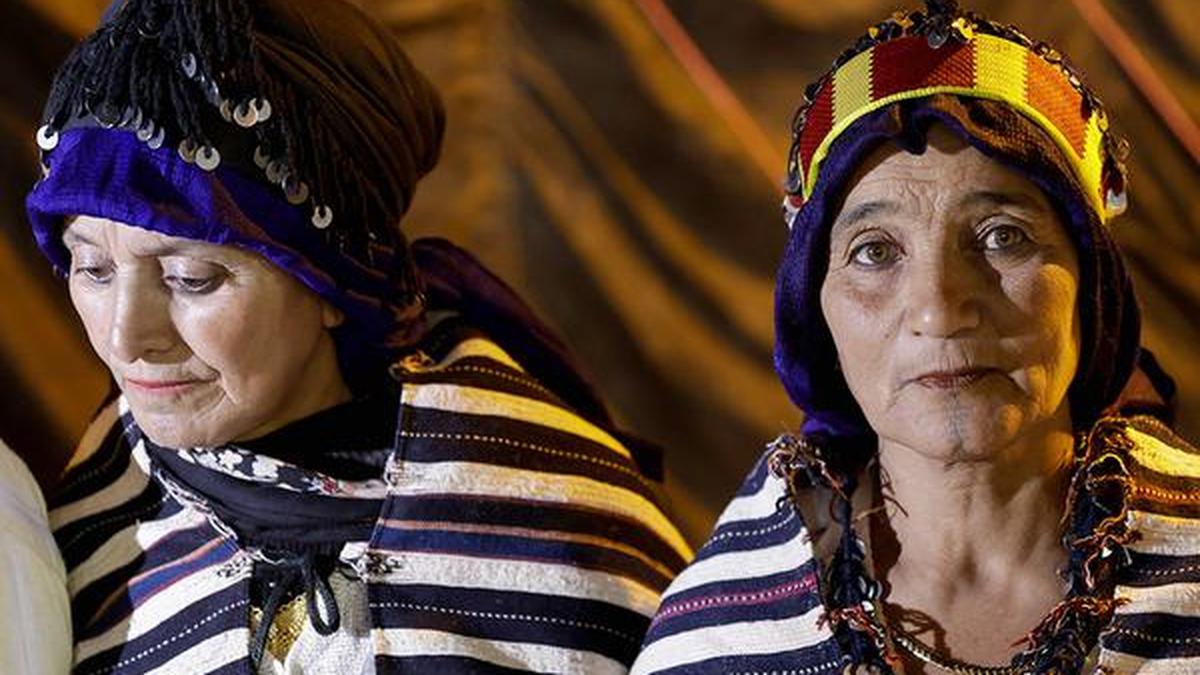
Decreasing time: Amazigh women getting their chin tattoos in the village of Imilchil, central Morocco. , Photo credit: AFP-
As a young girl growing up in the Atlas Mountains, Hannou Mouloud’s family took to getting tattooed on her chin the beloved lines that women of the Moroccan Amazigh tribe had worn for generations.
“When I was six years old, they told me that tattoos were beautiful decorations,” recalled the 67-year-old from the village of Imilchil, a common practice among women in the Amazigh groups of North Africa.
Long referred to as Berbers, many tribal peoples of the region prefer to be called Amazigh, or Imazighen, meaning “free people”.
Today, like many indigenous cultures around the world, where facial tattoos were long prevalent, the practice has largely died out.
Attitudes are changing
Many attribute the near disappearance of facial tattoos to Morocco’s changing religious attitudes in recent decades, with interpretations of Islam taking hold, where inked skin and other body modifications such as piercings are prohibited.
“We used charcoal to draw designs on our faces, then a woman would prick the drawing with a needle until it bled,” Ms. Mouloud said, adding that they chewed the wounds daily to keep them from deepening. Used to rub the wound with the green herb Vali. Tattoo color.
The designs of the markings vary among the tribes of minorities and were used to signify the origin of the wearer while providing beauty and protection.
painful ritual
Hannou Ait Mazen, 71, said getting tattooed would hurt and “we can’t hold back our tears” but it “remains a tradition that our ancestors gave us”.
Abdelouad Finigu, a geography teacher and researcher from Imilchil, said women often get tattoos on their chin, forehead or hands.
“Some women got tattoos on intimate areas as wedding gifts, expressing their love for their husbands,” he said.
“Woman, through her tattoos, expresses her beauty and her value as an individual independent of man,” he said, explaining what the different shapes could mean.
“For example, the circle represents the universe and beauty, as do the moon and the sun, which hold an important place in local rites of passage,” he said.
But changing religious trends mean fewer women are joining.
“In recent years, this practice has become contaminated by the preconceived ideas of Salafist currents,” he said, referring to a Sunni Islamist movement that seeks to return to the practices and teachings of the Prophet Mohammed. Bassou Aujabor, a member of local development association Akhiyam, said the scarred women faced social pressure.
“Fundamentalists sometimes describe tattoos as the devil’s book or the first thing to be burned on a human body,” he said.
“Fear of punishment after death, some women even remove the tattoo long after getting it.”
published – October 14, 2024 09:32 am IST
